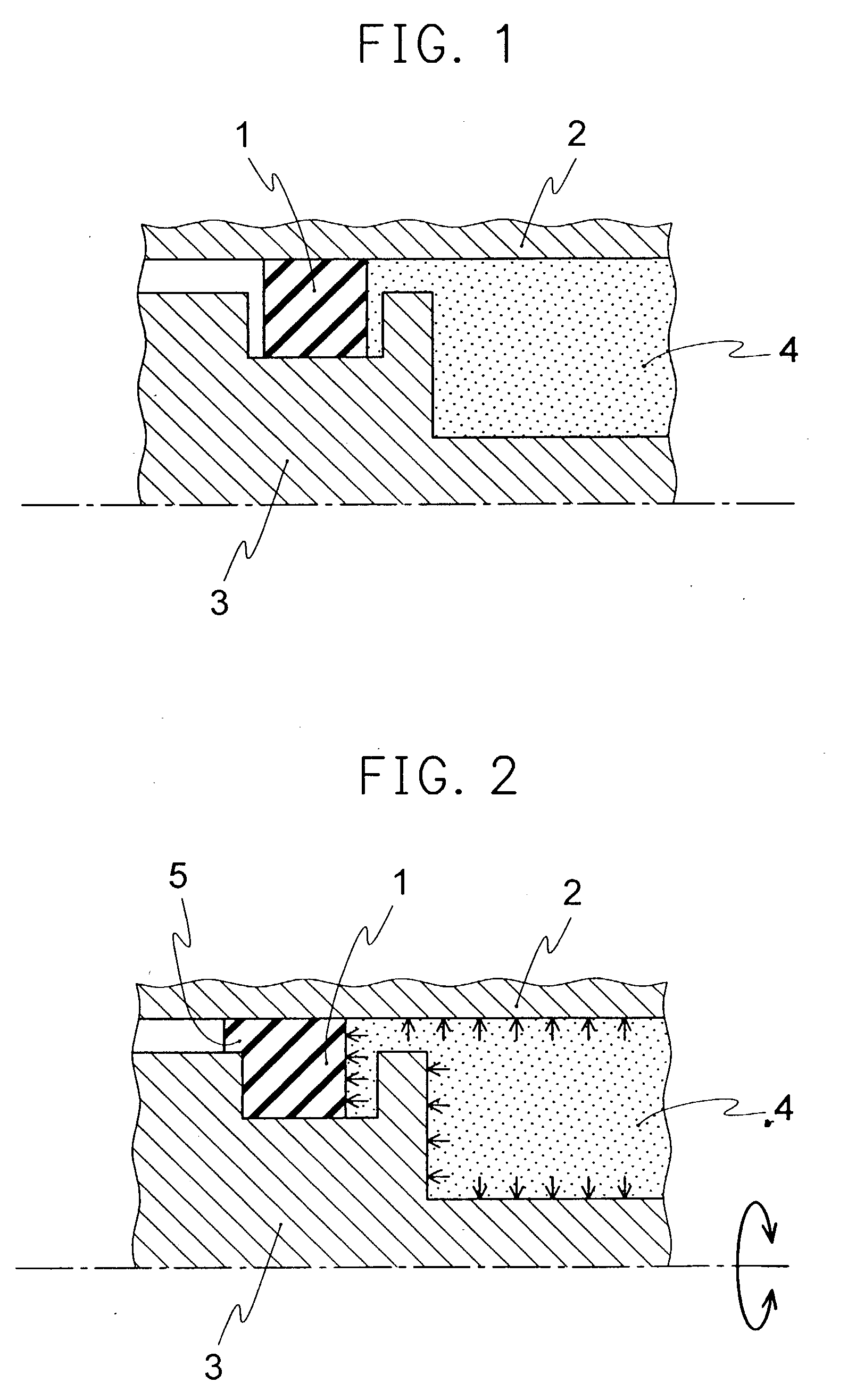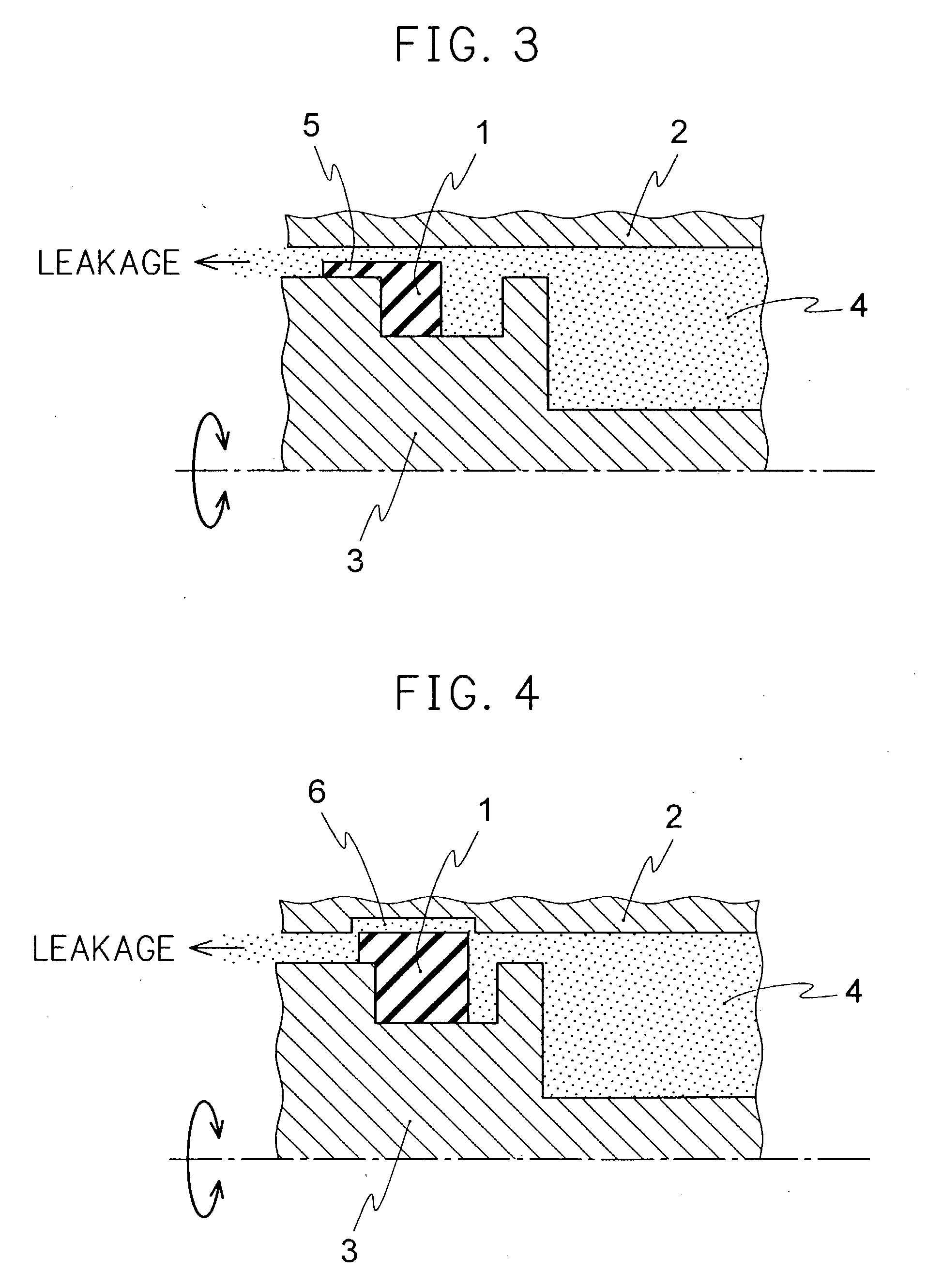Seal ring
a seal ring and ring technology, applied in the field of seal ring, can solve the problems of insufficient strength of molded objects prepared therefrom, serious problem to be solved above the defect of seal ring, wear, etc., and achieve the effect of improving the suitability for fitting, maintaining durability, and excellent suitability for fitting
- Summary
- Abstract
- Description
- Claims
- Application Information
AI Technical Summary
Benefits of technology
Problems solved by technology
Method used
Image
Examples
example 2
[0125] Molding was carried out in the same manner as in Example 1 except that the amount of the PTFE powder was changed to 95 parts by weight and the amount of the natural graphite powder was changed to 5 parts by weight, and a seal ring was produced. The durability of the seal ring was evaluated in the same manner as in Example 1. The results are shown in Table 1.
examples 3 and 4
[0135] The crystallinity and the variation of outer diameter of the sample seal rings produced in Examples 1 and 2 (inner diameter: 33.4 mm, outer diameter: 36.4 mm, height: 1.88 mm) were measured by the following methods. The results are shown in Table 2.
[0136] (Measurement of Crystallinity)
[0137] Measuring device: Differential scanning calorimeter model RDC220 made by Seiko Denshi Kogyo Kabushiki Kaisha
[0138] Measuring conditions: The seal ring is heated up from room temperature to 250.degree. C. at a heating rate of 50.degree. C. / min, allowed to stand at 250.degree. C. for 1 minute, heated up to 380.degree. C. at a heating rate of 10.degree. C. / min and then allowed to stand at 380.degree. C. for 1 minute.
[0139] Calculation: The crystallinity is calculated by the following equation:
Crystallinity (%)=(Measured heat of melting / Heat of melting of 100% crystallized PTFE).times.100
[0140] The heat of melting of 100% crystallized PTFE is 92.93 J / g under the above measuring conditions.
[01...
examples 5 and 6
[0143] Sample seal rings were produced in the same manner as in Example 1 except that a homopolymer of TFE was used instead of modified PTFE in an amount of 85 parts by weight (Example 5) and 95 parts by weight (Example 6). The crystallinity and the variation of outer diameter were evaluated in the same manner as in Example 3. The results are shown in Table 2.
2 TABLE 2 Ex. 3 4 5 6 Kind and amount (part by weight) of PTFE Modified PTFE 85 95 -- --PTFE (not modified) -- -- 85 95 Natural graphite (part by weight) 15 5 15 5 Crystallinity (%) 26.5 26.5 19.4 19.4 Variation of outer diameter (%) 3.3 2.4 3.3 2.4
PUM
| Property | Measurement | Unit |
|---|---|---|
| size | aaaaa | aaaaa |
| interplanar spacing | aaaaa | aaaaa |
| temperature | aaaaa | aaaaa |
Abstract
Description
Claims
Application Information
 Login to View More
Login to View More - R&D
- Intellectual Property
- Life Sciences
- Materials
- Tech Scout
- Unparalleled Data Quality
- Higher Quality Content
- 60% Fewer Hallucinations
Browse by: Latest US Patents, China's latest patents, Technical Efficacy Thesaurus, Application Domain, Technology Topic, Popular Technical Reports.
© 2025 PatSnap. All rights reserved.Legal|Privacy policy|Modern Slavery Act Transparency Statement|Sitemap|About US| Contact US: help@patsnap.com



